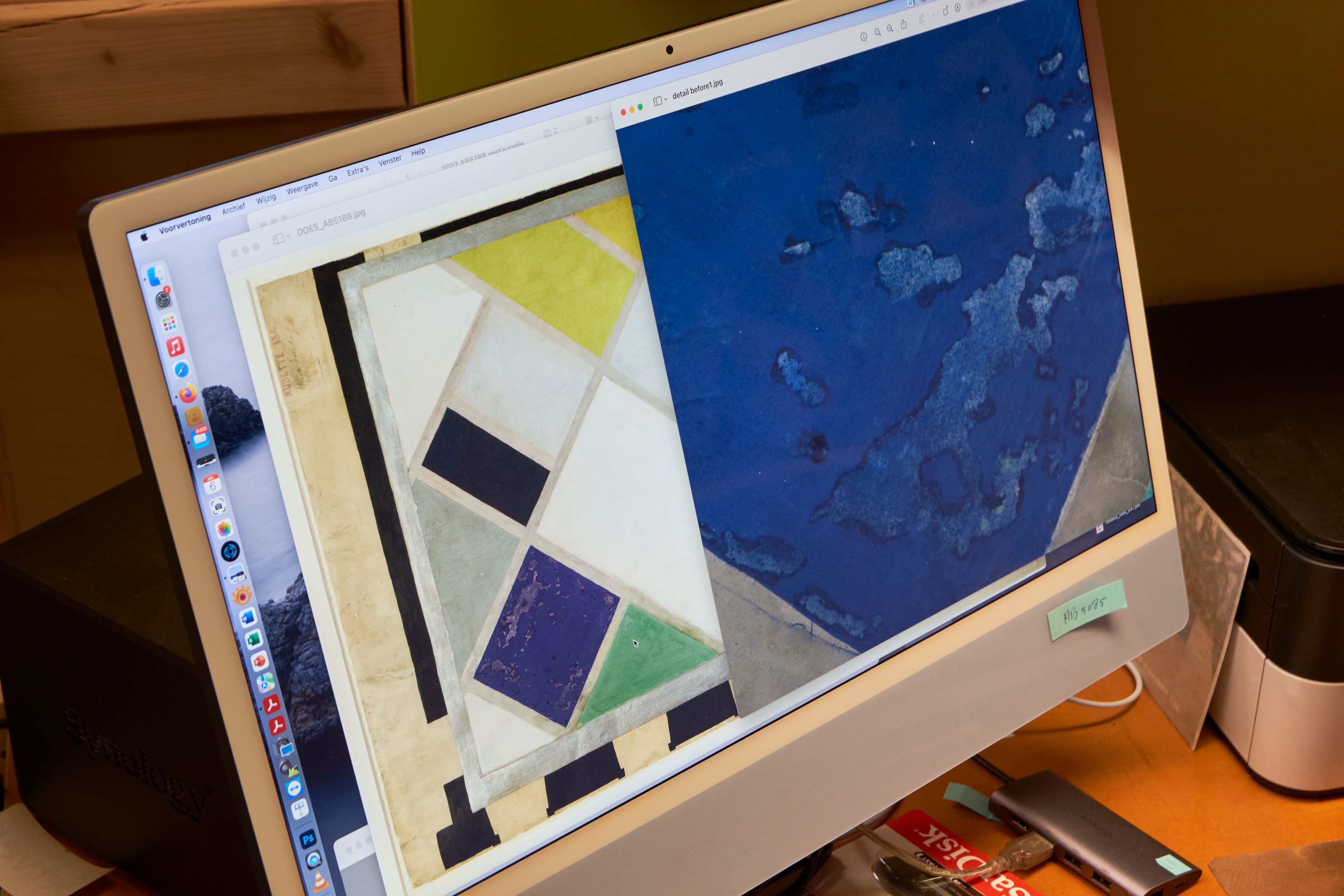Disclosing Architecture
31 December 2018 - 30 December 2024
Van Doesburg Collection
The Van Doesburg collection has a special status within the National Collection. It is of great cultural-historical significance and is loaned out to museums at home and abroad more often than any other collection. As a founder of De Stijl, Van Doesburg played a prominent role in the European avant-garde movement in the 1920s, and through his many (international) contacts, his archive is linked to numerous other sources within and outside the National Collection. It is of great importance that this collection remains fully accessible and safe to use. The restoration and conservation of 447 drawings, paintings, photographs and photomechanical reproductions has been outsourced to paper restorers and is carried out on location.
Van Doesburg Legacy
In the early 1980s, the Nederlands Documentatiecentrum voor de Bouwkunst [Netherlands Architecture Documentation Centre], the legal predecessor of the Netherlands Architecture Institute (NAi) and het Nieuwe Instituut, bought 47 drawings by Nelly van Doesburg-van Moorsel, Theo van Doesburg’s widow. In 1983, Wies van Moorsel, Nelly’s niece and heir, donated the entire Van Doesburg legacy, including the house with studio in Meudon-Val-Fleury, to the Dutch nation. In the spirit of Nelly, the Instituut Collectie Nederland divided the legacy among various museums and institutions in the Netherlands, to make the material available to the widest possible audience.
The then NAi acquired the architectural element of the Van Moorsel donation, which is now part of the National Collection for Dutch Architecture and Urban Planning. It contains built designs, such as that for Café Aubette, but also the counter constructions and tesseracts through which Van Doesburg tested his theories about architecture. There are also examples of his collaborations with J.J.P. Oud, Jan Wils, Cornelis van Eesteren and others. These include tile and stained glass designs, proposals for colour schemes and furniture and interior designs.
Damage inventory
The vast majority of het Nieuwe Instituut’s collection consists of drawings that were not made to be stored for many years. It is an archive, not a museum collection with works of art that were to be preserved for generations. The collection works are therefore fragile – including those of Theo van Doesburg, even though they form the most ‘museum-like’ collection in the national archive. Originally, these were working and presentation drawings. Various fragile and impermanent materials have been used, and the works were simply pinned to the wall during presentations. The nature and scope of the restoration task surrounding this collection has become clear on the basis of an extensive damage inventory. In addition to forms of so-called over-restoration from earlier periods, it also turned out that there is a total of about 18 metres of self-adhesive tape on the works that must be removed.
New stories
Following a temporary ban on loaning these works, research, restoration and conservation are not only making their display possible once again. Analysis of the works has also yielded new stories and new knowledge about Van Doesburg’s working method.


